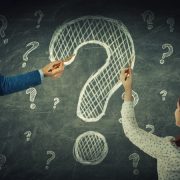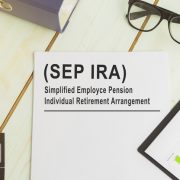Run a Sole Proprietorship? These are the Self-Directed IRA Accounts You Should Consider
Running a sole proprietorship is one of the simplest ways to be in business for yourself—but it also comes with a lot of responsibilities. Paying for your own health care, handling your own benefits, and ultimately funding your own retirement means that you will have to do a lot of planning if you want your business to function in a way that can work for the long term. But with the independence of a sole proprietorship comes the ability to use retirement accounts the way you see fit, as long as you know the rules.
With that in mind, let’s look at the best self-directed arrangements for someone in your position:
A Self-Directed Solo 401(k)
A Self-Directed Solo 401(k), also known as an individual 401(k), is exactly how it sounds: a 401(k) plan that you create for yourself. Since you are self-employed, you cannot rely on an employer to produce a 401(k) that you can participate in, but you can set one up for your own benefit.
Why might a sole proprietor want to use a Solo 401(k)? Here are some reasons:
- High contribution limits. If you have a high income in your role as a sole proprietor but do not know how to put that income to good use, a Self-Directed Solo 401(k) can be a great plan. At the IRS, the current annual contribution limit includes elective deferrals of up to 100% of compensation, up to a limit of $19,000 in 2019. Those limits go up to $25,000 if you are age fifty or older. That’s in a traditional S Corp structure in which you pay yourself a salary. But listen to what you can do as a sole proprietor: total contributions should not exceed $56,000 for 2019. Weigh that against the four-digit limits of a Roth IRA plan and you begin to see how a Solo 401(k) might create an advantage.
- Tax savings. Your contributions to a Solo 401(k) are pre-tax, meaning you can deduct the contributions—yielding immediate tax savings once you open the Solo 401(k) and make contributions up to the limit. This means that you can immediately begin stretching your income to maximize your retirement contributions while feeling minimal damage to the bottom line.
A Self-Directed SEP IRA
The Simplified Employee Pension IRA, or Self-Directed SEP IRA, is another common tool of sole proprietors. Maximum contributions here can escalate up to $52,000, depending on your situation, which means that high contribution limits aren’t a worry, either.
Keep in mind with a Self-Directed SEP IRA, however, the payment structure may be limited, as you will be expected to include any employees you might have in the plan. The contributions you make with a SEP IRA would technically be “employer” contributions; a pension plan IRA such as a SEP IRA would also require that you include employees in the pension plan.
For many sole proprietors, this is not a worry; they do not have employees to think about. But if you do plan on having employees in the future, a Self-Directed SEP IRA can be a way for you to offer retirement benefits.
Whatever you choose, it’s important that you utilize the tax benefits of these types of accounts. Sole proprietors often have to pay a lot in taxes and using post-tax dollars toward a Self-Directed Roth IRA can feel a bit onerous. Make sure you browse the available options and understand which might be right for your situation.
Interested in learning more about Self-Directed IRAs? Contact American IRA, LLC at 866-7500-IRA (472) for a free consultation. Download our free guides or visit us online at www.AmericanIRA.com.










